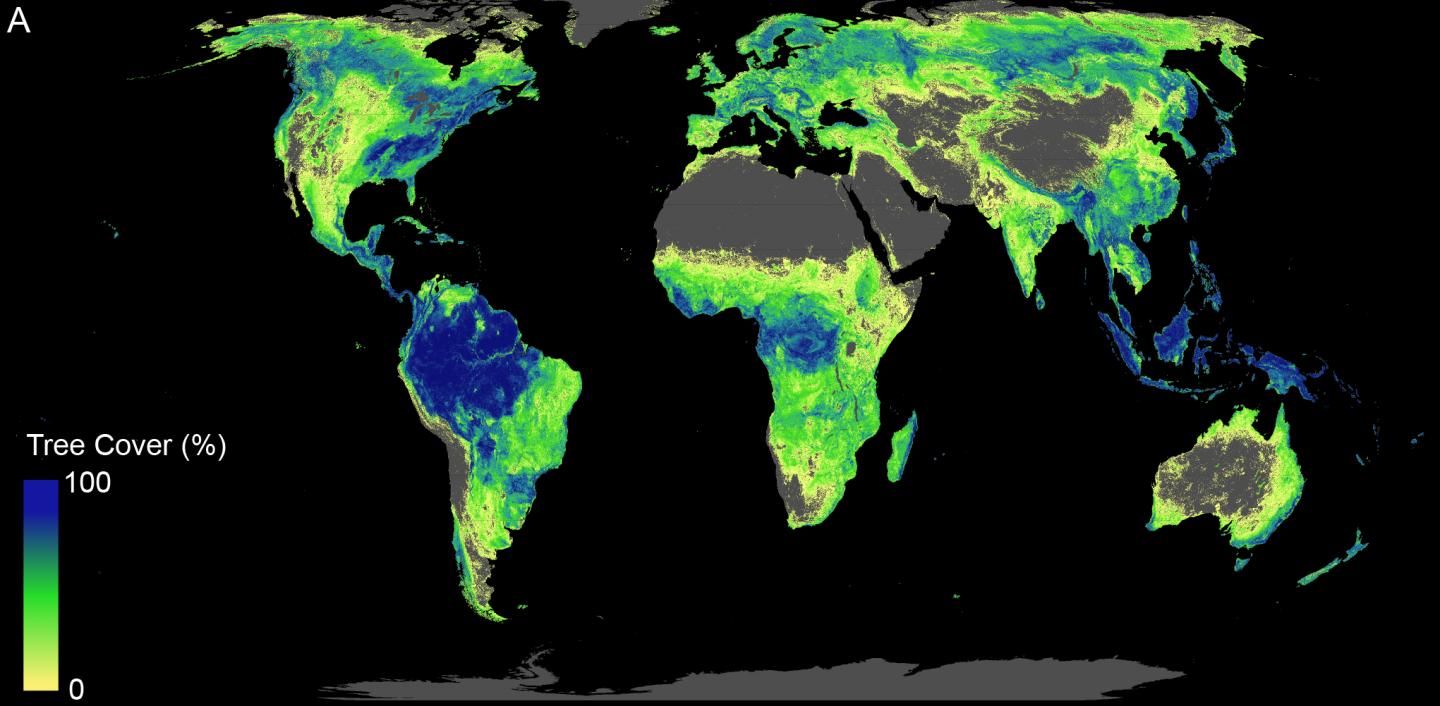
Credit: ETH Zurich / Crowther Lab
The Crowther Lab at ETH Zurich investigates nature-based solutions to climate change. In their latest study the researchers showed for the first time where in the world new trees could grow and how much carbon they would store. Study lead author and postdoc at the Crowther Lab Jean-François Bastin explains: “One aspect was of particular importance to us as we did the calculations: we ex-cluded cities or agricultural areas from the total restoration potential as these areas are needed for hu-man life.”
Reforest an area the size of the USA
The researchers calculated that under the current climate conditions, Earth’s land could support 4.4 billion hectares of continuous tree cover. That is 1.6 billion more than the currently existing 2.8 billion hectares. Of these 1.6 billion hectares, 0.9 billion hectares fulfill the criterion of not being used by hu-mans. This means that there is currently an area of the size of the US available for tree restoration. Once mature, these new forests could store 205 billion tonnes of carbon: about two thirds of the 300 billion tonnes of carbon that has been released into the atmosphere as a result of human activity since the Industrial Revolution.
According to Prof. Thomas Crowther, co-author of the study and founder of the Crowther Lab at ETH Zurich: “We all knew that restoring forests could play a part in tackling climate change, but we didn’t really know how big the impact would be. Our study shows clearly that forest restoration is the best climate change solution available today. But we must act quickly, as new forests will take decades to mature and achieve their full potential as a source of natural carbon storage.”
Russia best suited for reforestation
The study also shows which parts of the world are most suited to forest restoration. The greatest po-tential can be found in just six countries: Russia (151 million hectares); the US (103 million hectares); Canada (78.4 million hectares); Australia (58 million hectares); Brazil (49.7 million hectares); and China (40.2 million hectares).
Many current climate models are wrong in expecting climate change to increase global tree cover, the study warns. It finds that there is likely to be an increase in the area of northern boreal forests in re-gions such as Siberia, but tree cover there averages only 30 to 40 percent. These gains would be out-weighed by the losses suffered in dense tropical forests, which typically have 90 to 100 percent tree cover.
Look at Trees!
A tool on the Crowther Lab website enables users to look at any point on the globe, and find out how many trees could grow there and how much carbon they would store. It also offers lists of for-est restoration organisations. The Crowther Lab will also be present at this year’s Scientifica (web-site available in German only) to show the new tool to visitors.
The Crowther Lab uses nature as a solution to: 1) better allocate resources – identifying those re-gions which, if restored appropriately, could have the biggest climate impact; 2) set realistic goals – with measurable targets to maximise the impact of restoration projects; and 3) monitor progress – to evaluate whether targets are being achieved over time, and take corrective action if necessary.
###
Reference:
Bastin JF, Finegold Y, Garcia C, Mollicone D, Rezende M, Routh D, Zohner CM, Crowther TW: The global tree restoration potential, Science, 5 July 2019, doi: 10.1126/science.aax0848
Media Contact
Dr. Tom Crowther
[email protected]
Related Journal Article
http://dx.




